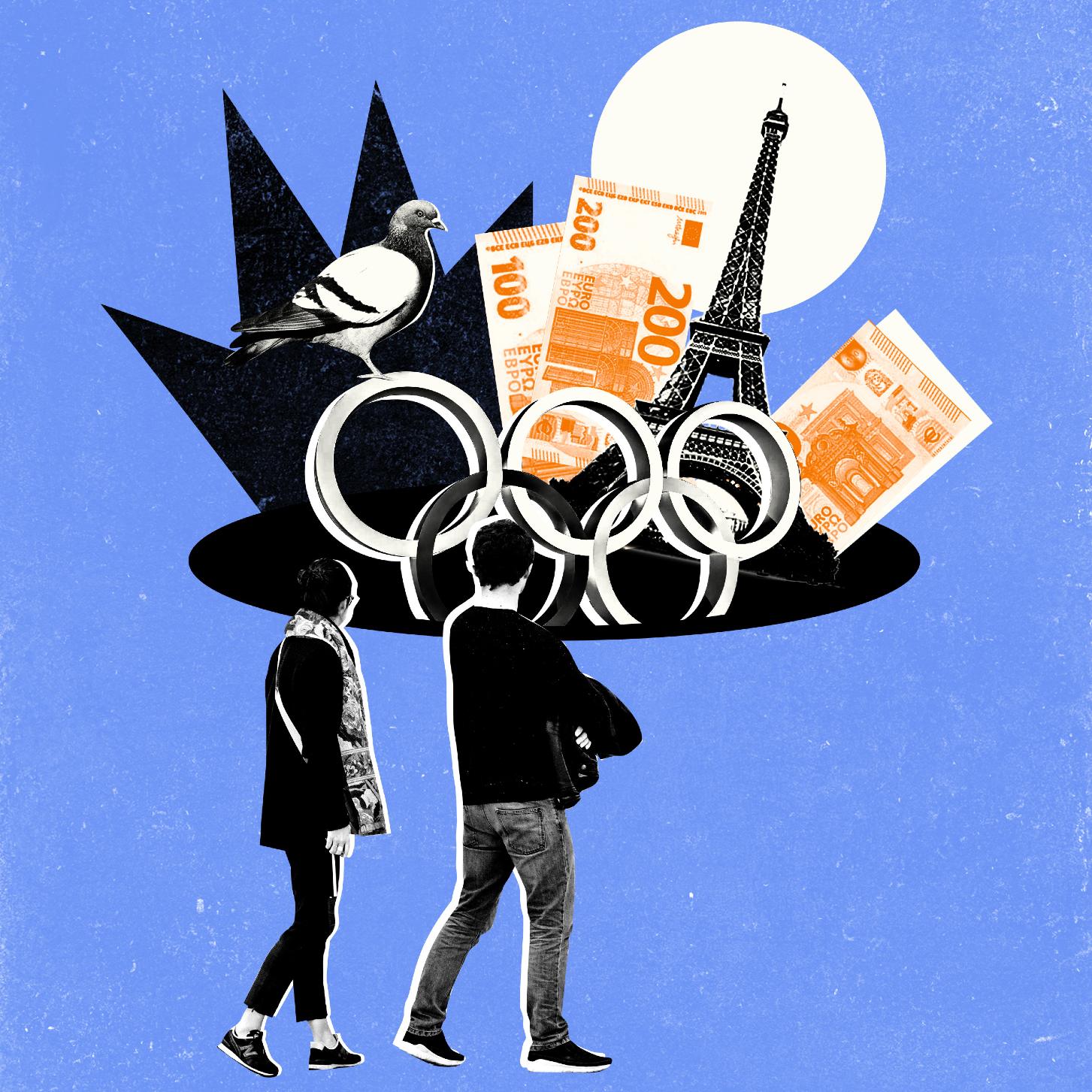After losing out to London in the contest for the 2012 Games, Paris was honor-bound to bid for the 2024 edition, which it won. This time, however, it faced only one competitor, L.A., compared with the usual five or six. That’s because cities are no longer jostling to stage the Olympics, deterred by spiraling costs, financial risks, and public opposition, not to mention allegations of corruption in the bidding process. And most winning hosts end up cursing their good fortune. As the France-based sports economist Wladimir Andreff says, “the initial euphoria of a successful bid is followed by a long bout of post-Olympic blues, plus a deficit to be made good by taxpayers.” Indeed, he adds, “the gap between the expected and final costs are inherent in the bidding process itself.” And the same thing is happening this time around.
The initial budget for the Paris Games has been swelling steadily, most recently by 10%. With domestic inflation currently running at around 6% annually, the final bill is bound to be bigger even though the initial costings were calibrated to avoid the massive overshoots experienced by previous hosts. In the construction industry in particular, cost inflation is already nudging 10%, raising concerns for the company tasked with delivering more than 60 projects, including the Olympic Village. One of the biggest headaches, not just in terms of cost, is security. The human and material resources needed to guarantee the safety of 13 million visitors and 15,000 athletes are mind-boggling. A particular worry is the opening ceremony, when more than 200 national teams will sail in special barges along the Seine River, cheered on by at least half a million spectators. The costs and contingencies of all this are the stuff of nightmares.
But expenditure is not the only problem. While they may seem anecdotal, other issues can be costly in terms of image. Take the official Paris 2024 mascot (please, take it!). For the past six decades, every Games has had its own distinctive talisman, usually a cute-ish peculiar creature or humanoid that supposedly symbolizes the Olympic spirit and promotes the history and culture of the host city. So when the Organizing Committee tasked a group (collectively known as “a spin”) of PR agencies with finding the embodiment of France’s capital, culture, and sporting prowess, those creative geniuses opted for what they thought was a powerful symbol: an animated, anthropomorphic red hat. Not just any red hat, mind you, but a Phrygian bonnet, the symbol par excellence of the French Revolution of 1789. That’s right: The 2024 Games will be symbolized by a pair of hominid headpieces – one each for the Olympics and the Paralympics – called les Phryges. According to the Committee’s president, three-time Olympic canoeing champion Tony Estanguet, the choice was informed by the desire to achieve a revolution through sport. “We didn’t want an animal,” he explained, “we wanted an ideal.” As it turns out, that choice was not really, well, ideal.

For those unfamiliar with French history, the Phrygian bonnet was a brimless cap with a padded forward-falling peak. Named for a former kingdom in Asia Minor, it was originally worn by emancipated Roman slaves, whence its alternative name: the freedom cap. It reappeared sporadically during the Middle Ages as a protest symbol, becoming the headgear of choice for the two major 18th-century republican revolutionary movements in America and more visibly, in France. Here, the bonnet is inextricably linked to Marianne, an allegorical figure symbolizing liberty, equality, and fraternity, and one of the most potent and visible symbols of French republicanism.
Adopted immediately after the Revolution as the emblem of the new republic, Marianne’s place in the national mythology was crystalized in a painting by the 19th-century Romantic artist Eugène Delacroix. The painting, Liberty Leading the People, shows a bare-breasted Marianne sporting a red Phrygian bonnet and a tricolor flag as she urges a band of revolutionaries across a smoke-shrouded barricade. Today, a bonneted Marianne personifies the French Republic, a sort of distaff Uncle Sam. She appears in silhouette on the logos of official government communications and as a sculpted bust in town halls and public buildings across the nation.
Significantly, the rebellious symbolism of that red bonnet endures to this day: The protesters who demonstrated against a proposed environmental tax in 2012 earned the name les Bonnets rouges in reference to a similar anti-tax protest centuries earlier. Yet despite its classical heritage, and even though it appears on the seal of the U.S. Senate, the full significance of the Phrygian bonnet is not instantly recognizable outside France. So when Mr. Estanguet described the country’s new Olympic mascot as franco-français – which translates roughly as “specifically French” but also “Gallo-centric” – his choice of words was unfortunate.
But ignorance of history is not the only drawback for les Phryges. Take pronunciation. For French speakers, the name is pronounced lay freezh, but judging by the foreign journalists attending the inaugural press conference, the non-Francophone rendition is most likely to be “the fridges” – a chilling prospect. Grammatically, the Organizing Committee has officially opted to assign the feminine gender to the noun (une Phryge), while also using the indefinite “it” in English-language presentations. This might seem a minor detail for most people, but it is likely to cause a ruckus if the grammar gestapo get involved. (Remember the hoo-hah over le or la Covid!) On a more serious note, the revelation that more than 80% of the mascots will be produced in China has sparked widespread criticism, compounded by tenuous official explanations about “supply-chain issues.”
The biggest problem, though, is visual, since perception is in the eye of the beholder. Basically, people see what they want. Puzzled by what he described as “a red poop emoji,” the American sports journalist Paul Newberry suggested that les Phryges had been chosen after a wine-fueled meeting, when the organizers said, “Hey, why don’t we stick some eyes and legs on this ugly hat and make it our mascot?” Other observers have been equally trenchant, likening the mascot to anything from a pumped-up chicken to a distressed Smurf hat. But the most controversial – and hilarious – description is a giant clitoris in sneakers. Social media went into overdrive as people expressed amazement at the clumsiness of the Organizing Committee, which “likely consisted solely of men.”
The baseline reaction on the French twittervine was: How can anyone be so dumb? “We could have chosen a beret or a baguette, but instead we went for a Phrygian bonnet that looks like a clit.” Women in particular piled on with glee: One complained sardonically that none of her boyfriends could find her 2024 Paris mascot, while another expressed grudging approval for the Committee’s choice because, she said, it was the first time that guys had actually recognized a love button. The PR agencies, for their part, garnered sarcastic praise from feminists for educating the entire world about the anatomy of female pleasure. The left-leaning daily Libération, for its part, expressed satisfaction that Paris would no longer be identified immediately with the phallic symbol of the Eiffel Tower.
Sarcasm aside, it is certainly a shame that what was intended to be an original, dynamic, and inclusive project is suffering a gratuitous backlash. According to the official presentation, les Phryges are supposed to get France moving and encourage participation in sports, not to become characters in a knockabout Olympic farce.
A lot remains to be done in the eighteen months until July 2024, and the challenges are certainly daunting. But the positives should outweigh the negatives. Both Paris and L.A. intend to irrevocably change perceptions of both the Olympics and the role of the host city. A top priority is cost control. Despite the inevitable inflationary drift caused by global factors, the Paris Organizing Committee has vowed to spend only what it is able to generate in revenue (President Emmanuel Macron has warned that the government will not levy an “Olympic tax” to cover any shortfall). Another core issue is environmental impact. Paris and L.A. have together committed to build on the legacy of previous host cities and produce the greenest games in modern history. In a joint statement, the cities’ mayors, who also head up the C40 Cities Climate Leadership Group, said that hosting the Games must not be an exception to that ambition. In fact, they are a unique opportunity to show the world what is possible. So, provided that L.A. takes great care in its choice of mascot, the next two editions of the Olympics should write the rulebook for the foreseeable future.
Article published in the January 2023 issue of France-Amérique. Subscribe to the magazine.












